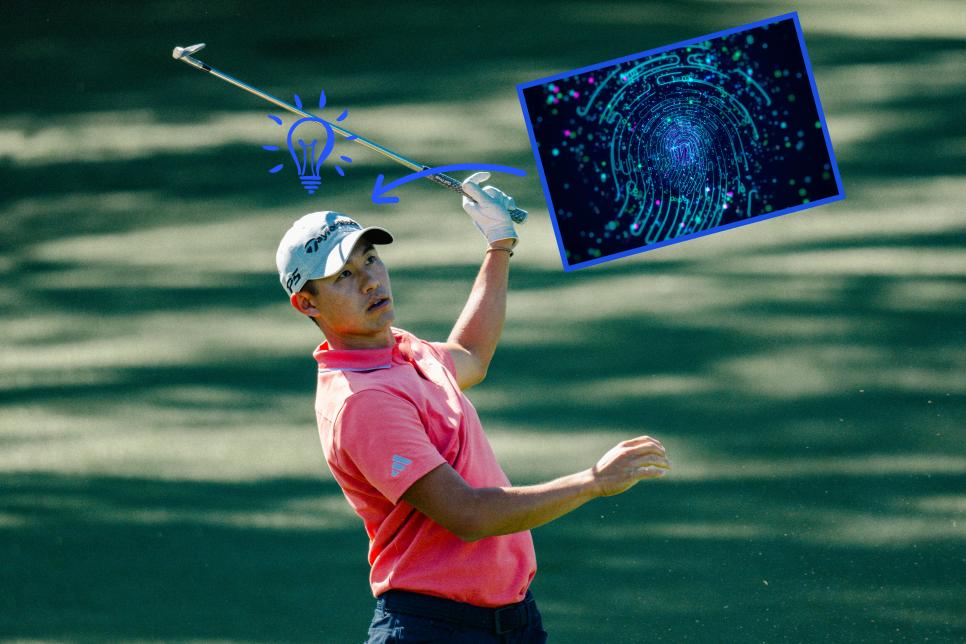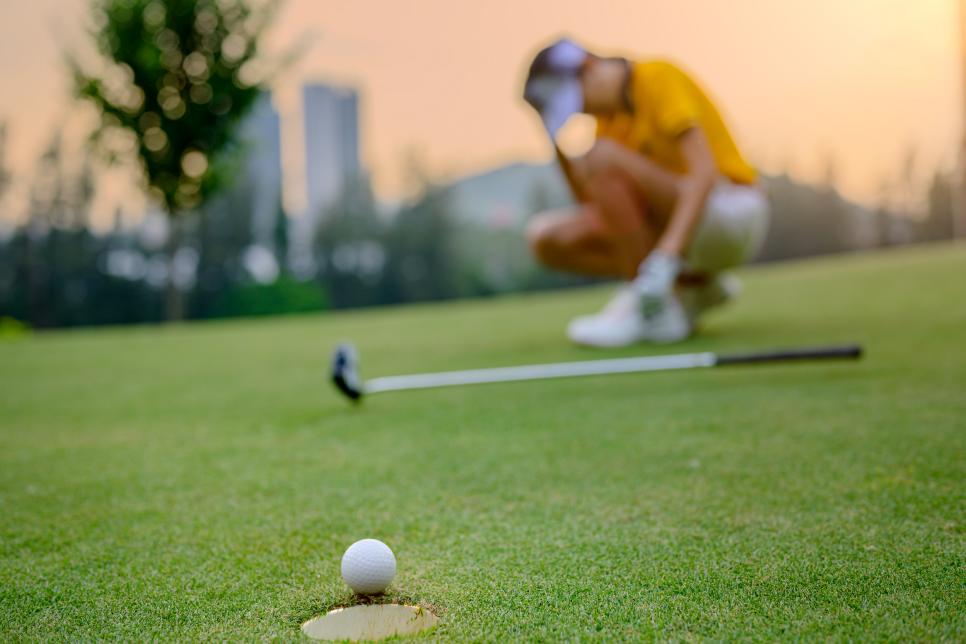Mental game
This ‘78-22 percent’ difference is a key scoring trick for pros—what we can learn

J.D. Cuban
Let’s say you get off to a great start in a round and hit a bunch of solid shots in the first few holes. Then, you hit your dreaded miss. What are you thinking about on the next shot? If you’re like many of us, it’s that poor shot and not the quality ones that came before.
That’s because we often focus on the shots that we don’t have on a given day and not the ones we do. Put simply, we’re focusing on what is wrong and not what is right. It’s a concept that sports psychologist Dr. Bhrett McCabe calls capability versus capacity, and it is key difference between us and the pros.
We recently held a Golf Digest Happy Hour with McCabe as part of our live webinar series offered exclusively for Golf Digest+ members. You can check out the complete recording of our hour-long Q&A here.
The capability vs. capacity dilemma
McCabe—who has worked with numerous tour pros including Jon Rahm, Nick Dunlap, Sam Burns and others—explains that we all have a certain level of capability as golfers. This is our true potential or our best selves. Think of our games like a battery; our capability is when we’re at full charge and everything is working as best it can.
(Editor’s note: Join us for our next Happy Hour on Thursday, April 25 at 8 p.m. EST: “Unlocking the mystery of clubfitting.” We will be joined by Golf Galaxy’s lead fitter Chris Marchini, who will answer questions from Golf Digest+ members and explain how to find the right club setup for your game. You can find more information on the live webinar here.)
The problem, however, is that we are hardly ever operating at our full capability.
“Scottie Scheffler and guys on tour, their capabilities are [high], but when they cross that white line and go play, they’re not going to have 100 percent of their tool set,” McCabe says. “They may be tired, they may have a group they don’t like, they may be hitting it so good that their yardages are plus three yards and it’s disconcerting.”
There are too many factors in golf to expect our best selves every day—or even hardly at all. That is why our capacity, or what we bring to the golf course on any given day, is different and often far lower than our true capability.
Maybe your back is sore, maybe you have tension at home, maybe your swing feels a little off. Whatever it is, we hardly ever bring our “golf batteries” to the course fully charged.
The 78-22 percent difference: What we do

Iam Anupong
“If you could put your finger on a scanner and it said, ‘Alright, you’ve got 78 percent of your abilities today,’ most players would say ‘Oh man, I hope I have my driver. I hope I have that,’ ” McCabe says. “Most players are trying to find the 22 percent that is missing. They are out there messing with their swing and trying to find a groove.”
We become obsessed with the parts of our games that are off and neglect the 78 percent that we did bring to the course. Maybe you’re driving it horrendously but chipping and putting well. Instead of embracing your strong short game, too often you might spend the entire round trying various swing thoughts to fix your driver. Now, all of a sudden, you start to make simple errors around the greens.
The 78-22 percent difference: What pros do
This is a mistake pros hardly ever make, McCabe says. “The best players are saying, ‘This is the 78 percent I have,’ and they may downshift it into a fairway finder for the first five or six holes.”
Pros don’t spend their rounds obsessing over what they aren’t doing right. They aren’t trying to fix their swings on the course. They save that for after the round on the practice range.
On the course, your only goal is to score, and to score, you need to focus on what you are doing well that day and execute a game plan around that. That could mean simply aiming way left and playing your slice into the fairway instead of trying to force a draw, or it could mean taking putter from well off the green because your chipping is spotty. It doesn’t matter if you’re normally a good driver of the ball or a good chipper.
Remember, just because you are often capable of hitting a certain shot, that doesn’t mean you have the capacity to hit it every day. You’re hardly ever playing with 100 percent of your skills.
So next time you’re headed from the range to the first tee, take a mental scan of your capacity. What percentage of your game are you bringing to the course? Whatever it is, focus on the shots you do have that day and stop trying to find the ones you don’t. You’ll shoot lower scores and spend way less energy trying to find something you don’t have.
(Once again, please join our next Happy Hour on April 25, “Unlocking the mystery of clubfitting,” where equipment experts will answer your questions and help you find the best club setup for your game. You can read more about this live webinar here.)




